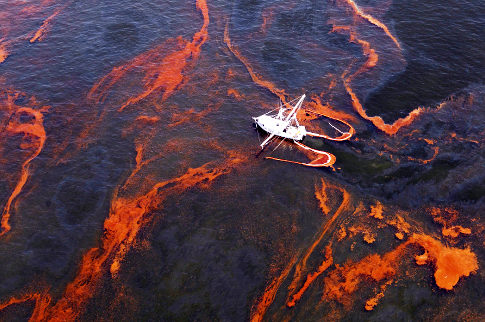About This Project
In the long term, this research into aerogel could provide revolutionary advances in the efficient cleanup of oil spills and other harmful substances that are dumped or spilled into the oceans with green and renewable technology. The aerogel is not only capable of cleaning the oil off the the water's surface, but recycling it as well.Ask the Scientists
Join The DiscussionWhat is the context of this research?
There are many different forms of cleanup currently used by organizations; mechanical barges and skimmers and gelling agents such as activated carbon are common. However, mechanical solutions can have high production costs, and activated carbon poses a threat to the very wildlife organizations may be seeking to protect. With effects of the Deepwater Horizon oil spill of 2010 still felt across the Atlantic Ocean, it's clear that efficiency of current technology isn't enough to prevent further harm to the aquatic environment.
What is the significance of this project?
The global environment is like a shard of glass: if even an inch of it cracks, the whole window shatters. More than three quarters of our home is covered by oceans, and they're only getting larger. Thousands of different species live in these waters, and crude oil presents a potential threat to all of them; Sea Turtle strandings alone increased more than 400% in the 3 years after the Gulf spill (from 100 per year to nearly 600.)
A greener, more efficient, more cost-effective alternative has to be found in order to protect the delicate ecosystem threatened by incidents such as the Deepwater Disaster. Hydrophobic Silica Aerogel is the product that does just that: a recyclable, renewable, ecologically-friendly substance made from a chemical that costs around $2 a liter.
What are the goals of the project?
1. Continue ongoing research into the real absorbent properties of hydrophobic silica aerogel; extensive and varied testing ranging from unrefined petroleum oil to the chemical toxic waste that is sometimes dumped into the ocean
2. Find a cost-effective, consistent manufacturer for the mass production of hydrophobic silica aerogel
3. Discover an eco-friendly use for the recycled oil
4. Long-term, eventually reach self manufacturing to cut overall costs to the product
Budget
At the moment, silica aerogel (especially in hydrophobic form) is especially expensive to buy on the common market - around $60 for a disc weighing roughly .2112 grams (a disc that measures 1.2 mm in height and 1.5 mm in diameter.)
For this, we would need to be able to create our own product; and while more expensive at first, it would ultimately pay off for testing in the long run. Being able to create our own aerogel would provide for much more efficient and varied testing: with the chemical formula for the chemical used to make it already known, manipulation for better results would be easily accessible.
Mock experiments would then be conducted much more frequently, and when trials move from out of the classroom and into the ocean we'll have much more precise data regarding the amount of aerogel needed to efficiently clean the oil spills, as well as any possible extra materials needed in order to make the project a viable alternative to current methods
The freeze drying chamber is used in the process of RSCE (rapid supercritical extraction), which turns the TMOS chemical from a liquid into a solid.
The TMOS (Tetramethoxysilane) is the chemical used to create the aerogel, with certain elements of the recipe being altered throughout testing in order to determine the best mixture for optimum results.
The unrefined petroleum oil is to the the absorbent properties of the aerogel on the substance that is most commonly dumped into the ocean, making it the number one priority for efficient cleanup.
Meet the Team
Team Bio
I was first introduced to the issues presented by the Gulf oil spill in my chemistry class and - while we primarily focused on current methods of cleanup - it was clear that current technology didn't stand up to the task at hand.I've lived near the ocean nearly all my life. I've surfed with dolphins, dove with jellyfish, and to think that such a beautiful yet delicate ecosystem is being so violently threatened by people with no regard for its safety is terrifying.
It's occurred to me that these people no longer care about the welfare of the environment most of us have forgotten to cherish in the first place. It's time for a change, and if all we can do is clean up other people's messes to keep the environment clean and healthy for more than just ourselves, then so be it.
Additional Information








Project Backers
- 12Backers
- 100%Funded
- $500Total Donations
- $41.67Average Donation
